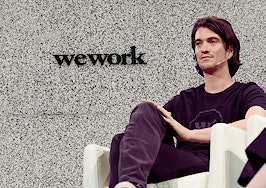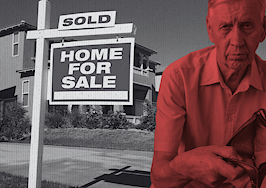No one can predict the future of real estate, but you can prepare. Find out what to prepare for and pick up the tools you’ll need at Virtual Inman Connect on Nov. 1-2, 2023. And don’t miss Inman Connect New York on Jan. 23-25, 2024, where AI, capital and more will be center stage. Bet big on the future and join us at Connect.
Redfin CEO Glenn Kelman had a tightrope to walk when he announced in April that all employees living near one of the company’s offices would be required to show up in person after three years of working remotely.
He knew he’d lose employees over the decision. He knew some of those that stayed would be unhappy about it.
But he said the benefits that would come from employees working together in person would outweigh the loss in flexibility.
TAKE INMAN’S INAUGURAL SURVEY ON AGENT COMMISSIONS
“This will be a big shift in how many of us work and a change in course, as I once said that we don’t plan to require headquarters employees to come back to the office,” Kelman said at the time.
Redfin’s mandate underscores the deliberations that experts say are uniquely American, as companies that quickly abandoned their owned or leased office space in response to the COVID-19 pandemic define themselves in a post-pandemic future. The deliberations will affect the ongoing recovery of downtowns across the country.
The ongoing adjustment to working remotely, in-person or a combination of the two continues to send shockwaves through the U.S. office market, where buildings are reeling from vacancies and values have plummeted.
The office sector is one of the hardest-hit segments of real estate in the U.S., experts told Inman, and for a variety of reasons the pain largely isn’t felt in major cities outside the U.S.
“Our cultures are different around work-life balance,” said Julie Whelan, global head of occupier thought leadership at the commercial real estate firm CBRE. “In the U.S., it’s an always-on culture that was very focused…on being in the office five days a week, eight-to-10 hours a day.”
A uniquely US problem
The severity of distress in the office sector is unique to the U.S., CBRE analysts said.
That’s because of a set of factors, including differences among cities and countries ranging from the size of homes to general employer flexibility before the pandemic, Whelan said.
“They tend to have smaller households that can be multigenerational,” Whelan said of countries outside the U.S. “There’s not as much quiet space to work from home, and you have more of your employee base actually living in large cities in Asia.”
Asian companies typically had a stronger expectation that employees would be in office, Whelan said. In Europe, meanwhile, employees benefited from a more flexible work-life balance, so employers haven’t had to adjust to a post-COVID working environment as much as U.S. employers, she added.
“All of those factors are at play along with the more heavy reliance on public transportation that they have,” Whelan said, “it just creates this environment that you naturally have more people to go back.”
Buildings with the most amenities are seeing more leasing activity and higher building values.
“Nowadays people are comparing their workplace environment with their home,” said Ada Choi, CBRE’s occupier research lead in Asia-Pacific. “Companies realize they need to provide a good working environment.”
For example, the vacancy rate in Manhattan is 21 percent for what CBRE deemed “mediocre buildings.” For those that have more amenities and easier access to transportation, the vacancy rate is 13 percent.
Paris’ overall vacancy rate is 7.5 percent, CBRE analysts said in a recent midyear outlook. In the city’s core, it’s closer to 2 percent, they said.
When buildings are closer to fully occupied, they’re valued higher than when they’re largely empty, Whelan said. With higher vacancy rates in the U.S., buildings are commonly selling for half-off. While other countries are also impacted by higher interest rates, they aren’t getting hit by what Whelan called the “double-whammy” of high-interest rates and low-office occupancy like they are in the U.S.
Whelan said she expects U.S. companies will continue defining their office policies in the coming six to 12 months, Whelan said.
“We’re still a good year away, fall of 2024 before we can state that we’ve reached the new normal,” Whelan said. “At that point we can start to gauge the market to understand if we reached a new normal.”
In the meantime, U.S. companies will continue to look to offload some of their leased space to rightsize their office footprints. That’s what Redfin is doing.
The Redfin experience
Redfin employees have been back in the office on a hybrid schedule for just over a month.
When Kelman announced his decision to call workers back into the office, he said it came after a realization that the company’s culture was suffering from distance.
“It has become clearer over the past year that the culture we’ve developed around remote work has been at best good, not great,” he said in a blog post at the time.
Employees are now expected to show up in person on Tuesdays and Wednesdays if they live within 20 miles of the company’s offices in Seattle, San Francisco and Frisco. Those outside of the perimeter are expected to make quarterly visits.
The company told Inman its employees are generally enjoying getting together with coworkers, some of whom are younger and have never known what it’s like to work at an in-office job.
“Because everyone is coming in on the same days, there’s a lot of energy in the office,” the company said in a statement to Inman. “We continue to believe that working together in person will be good for our culture and especially beneficial for early-career employees.”
The new schedule also reflects a reality that Redfin will indefinitely need less space, and the company has put some of its space up for sublease.
“Our goal with hybrid work is to get the best of both worlds: retaining much of the flexibility of remote work while fostering the personal connections and creativity that come with being together,” the company said.
The number of companies looking to sublet their office space has more than doubled compared to before the pandemic as U.S. companies look to downsize their footprints.
“We had so much space per employee and are now adjusting to it,” Whelan said.
Upcoming distress
The upcoming year of continued remote work adjustments in the U.S. are expected to keep pressure on an already struggling office market, experts said.
There’s an estimated $1.5 trillion in commercial real estate loans that will come due by the end of 2025, according to the Mortgage Bankers Association.
Many of them were obtained when building values were higher, particularly for office buildings that are increasingly being eschewed by employers who instead are flocking to high-end, newly built office space.

Even as employment has grown, U.S. employers are realizing they need less space for employees. Chart by CBRE
As companies have shifted around their office needs they have signed leases in buildings that have the amenities that might help attract employees who otherwise have grown accustomed to working from their homes.
“It is primarily a U.S. problem, and it stems from issues in the office sector,” said Darin Mellott, vice president of capital markets research at CBRE. “There’s no doubt we’re going to see a significant amount of distress, particularly in office, during coming quarters.”
Banks in the U.S. are holding about $1.7 trillion in commercial real estate loans. Offices make up about $340 billion of that, and CBRE estimates banks could lose $26 billion on office loans alone over the next three years.
Upcoming losses will be significant and will likely continue to tighten lending markets, but analysts don’t expect it to destabilize the U.S. economy.
“We think that this is going to be particularly problematic for smaller communities,” Mollett said. “But we don’t think these losses on their own would destabilize the financial sector.”
Get Inman’s Property Portfolio Newsletter delivered right to your inbox. A weekly roundup of news that real estate investors need to stay on top, delivered every Tuesday. Click here to subscribe.
















